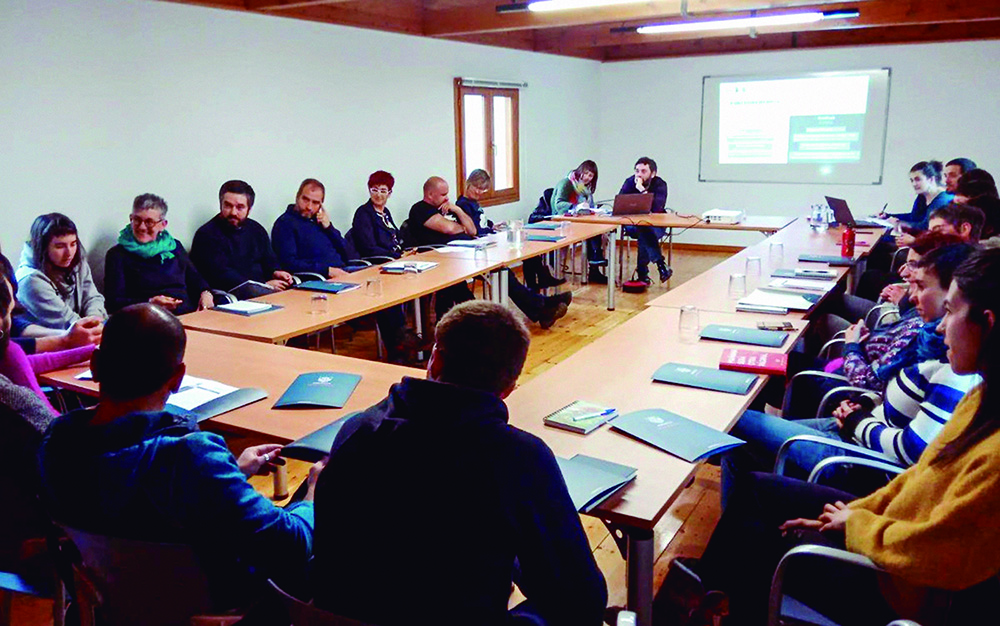Lack of opportunities to live there
- Faced with the economic factors that represent healthy social cohesion, the imbalance between the age groups that has caused depopulation may jeopardise the future of the Alavesa Mountain.

In Álava, Mendialdea is the region with the lowest population density (5 inhabitants/km2), and in the Basque Country alone, the region of the Pyrenees of Navarra is the one with the lowest density. Thus, as Gaindegia has gathered, "depopulation is the greatest evil in the territory". At the beginning of the 20th century, the Alavesa Mountain had about 8,000 inhabitants, and currently has 2,912 registered inhabitants. "In the last ten years, Alavesa Mountain has lost 8.3% of the total CAV population." In fact, the economic crisis that followed the economic crisis of 2008 caused a great loss of population in the territory, and other factors have also contributed to deepening the disease of depopulation.
Services, far away
Thus, the Observatory for Economic and Social Development has highlighted in the recent socio-economic photograph of the counties of the Basque Country that Montaña Alavesa has remained out of the central axes of general territorial planning and that its basic services are far away, "further than in any other country".
In turn, it is a region with a weak economic fabric, so Mendialdea offers little possibility of "developing life projects holistically" and "has long been unable to compete with capital".

If we look at the data, the demographic problem of Mendialdea is evident: "The presence of children in the region is very low (11.6%), much lower than that of the Basque Country (-2.8%). However, the greatest gap occurs in generations from 15 to 29 years, whose presence is limited to 9.6% of the population". The absence of young generations is linked to a weak presence of women, and generations older than 45 years have a greater presence than usual. "On that basis, it is difficult for there to be a balanced representation of generations in the future," he added. Imbalances and lack of vitality among age groups are the main risks of the social cohesion of the Alavesa Mountain.
Healthy social cohesion
However, Gaindegia has also offered encouraging data. In fact, the rest of the elements analyzed reflect a "healthy" social cohesion. Thus, socioeconomic imbalances among the population are lower than in any other CAPV territory. In addition, although the educational resources are limited, the average level of education of the population is medium, because among the young generations it is linked to the labor market of Vitoria-Gasteiz.
Among the positive factors, the study also points out that there are not few who approach the people during the weekend or summer hours, "that is, there are vitorians who have a relationship in one way or another with the territory of origin".
The primary sector is the main axis
Agriculture and livestock are the economic axis par excellence of the Mountain, representing 41% of the economic fabric. However, only 12.6% of the wealth is generated by the primary sector. On the other hand, the presence of the industry is weak and there is only one large company in the region dedicated to the manufacturing industry. With regard to the mountain services sector, its development is limited and aimed at meeting the needs of the people living in the territory. As regards employment, in the Alavesa Mountain there are not as many active people (1,500) as there are jobs (880), and there is a great dependence on capital, that is, the most important part of the registered people has their place of work in Vitoria-Gasteiz, especially in the services or industry sector. In any case, the activity rate of the population (81.5%) exceeds that of the Basque Country (+4.7%) and the Alavesa Mountain has a higher per capita GDP than that of Álava (37,100 euros) due to depopulation. On the other hand, the average annual personal disposable income of the residents is 15.900 euros, slightly lower than that of Álava.
"Ipar Euskal Herria gaztez odolusten ari da". Sail berriak sortu goi-mailako ikasketetan, etxebizitza sozialak egin gazteentzat edo aisialdia euskaraz bermatu… Hamabost proposamen konkretu egin ditu Xuti Gazte ezker abertzaleko gazte antolakundeak.
2014 eta 2020 urteen artean 350 biztanle galdu ditu Zuberoak (-%2.55). Galera handienak Maule, Barkoxe, Sohüta, Garindaine, Ligi, Mitikile, Atharratze, Bildoze, Altzai eta Montori herrietan izan dira. Haatik, zenbait herritan biztanle kopurua emeki goratzen ari da.
Azken biztanle kontaketaren arabera, Lapurdiko kostaldeko herri bakarra da Ziburu beheranzko joeran dagoena. 6.800 izatetik 6.200 biztanle izatera pasa da azken sei urteotan.
Hurrengo urtean India izango da munduko herrialderik populatuena, Txinaren aurretik; datorren azarorako, 8.000 milioi herritar izango ditu planetak; zortzi herrialdetan kontzentratuko da biztanleriaren hazkunderik handiena; baina oro har jaiotze tasa txikitzen eta biztanleria... [+]
From time to time, I hear or read a concern that normally goes through the edge of my attention: the population ages. It's happened to me recently. And through a plunge of data, I'm usually unearthed by the pace and geography of that aging. It tempts us to be serious and to... [+]
Herri eta bailara ugari basamortu bihurtzen ari da Euskal Herrian. Lan eta zerbitzurik gabe, egungo merkatuak bazterturiko eremuotan nola bizi? Egoera hori irauli nahi du Udalbiltzak, eta horretarako, logika lehiakorretik at, pertsonak erdigunean jartzen dituen ekonomia... [+]























